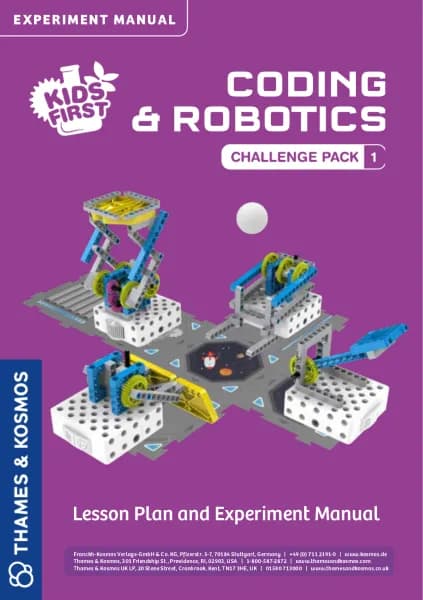Thames & Kosmos Green Engineering: Clean Energy & Sustainable Living handleiding
Handleiding
Je bekijkt pagina 24 van 36

T
Y nD A sNiCa
tPeTu dFeN bWe tH
hSe NtI Te HeIn An Th
sRoDi tPeTuR, N De Fo ThE
eErEn To O! H tPeTu
dFeN
Ou bE mE A 3 -5°.
EXPERIMENT 7: INSULATING THE HOUSE
2222
Insulate your
house
You will need
– Assembled model house
– Charged batteries in battery station
– Water pump and climate control module
– Cardboard piece A from the back
of the house
– Insulation materials: Blankets, scarves,
cardboard, modeling clay, Styrofoam, etc.
– Cell phone or stopwatch
Here’s how
1. Do the heating experiment on page 19 and
heat your house with warm water.
2. After about three minutes, check the
temperature reached and write it down.
3. Now insulate your house: Place cardboard
part A in front of the transition to the
extension with the battery compartment.
If you like, seal all open cracks on the
house with clay. Then cover the house by,
for example, building a layer of Styrofoam
around it or wrapping it in a thick blanket.
The materials should fit as tightly as
possible to the house.
4. Set a timer for 3 minutes, then run the
heating experiment on page 19 again. After
the 3 minutes have passed, remove the
insulation from the house and quickly read
the temperature shown on the thermal
strip. Compare it with the temperature
previously measured in the uninsulated
house.
In the first part of the experiment, you should measure a
lower temperature than in the second part, once the house
has been insulated. This is because heat transfer takes place
between bodies with a higher temperature and those with a
lower temperature. Your model house has thin walls made of
cardboard and paper and the windows are made of plastic
film and are not sealed. The house therefore quickly releases
its heat into the surrounding air. Sealing and wrapping your
house reduces heat transfer to the air. Measures that prevent
heat transfer are called thermal insulation. Insulation can be
used to save energy. A lack of insulation, as modeled in
part 1 of the experiment, means that heat is lost and much
more heating is required. You can read more about insulation
on page 24!
3
1
W
H
a
’
S
H
p
E
I
n
G
?
Bekijk gratis de handleiding van Thames & Kosmos Green Engineering: Clean Energy & Sustainable Living, stel vragen en lees de antwoorden op veelvoorkomende problemen, of gebruik onze assistent om sneller informatie in de handleiding te vinden of uitleg te krijgen over specifieke functies.
Productinformatie
| Merk | Thames & Kosmos |
| Model | Green Engineering: Clean Energy & Sustainable Living |
| Categorie | Niet gecategoriseerd |
| Taal | Nederlands |
| Grootte | 33452 MB |







